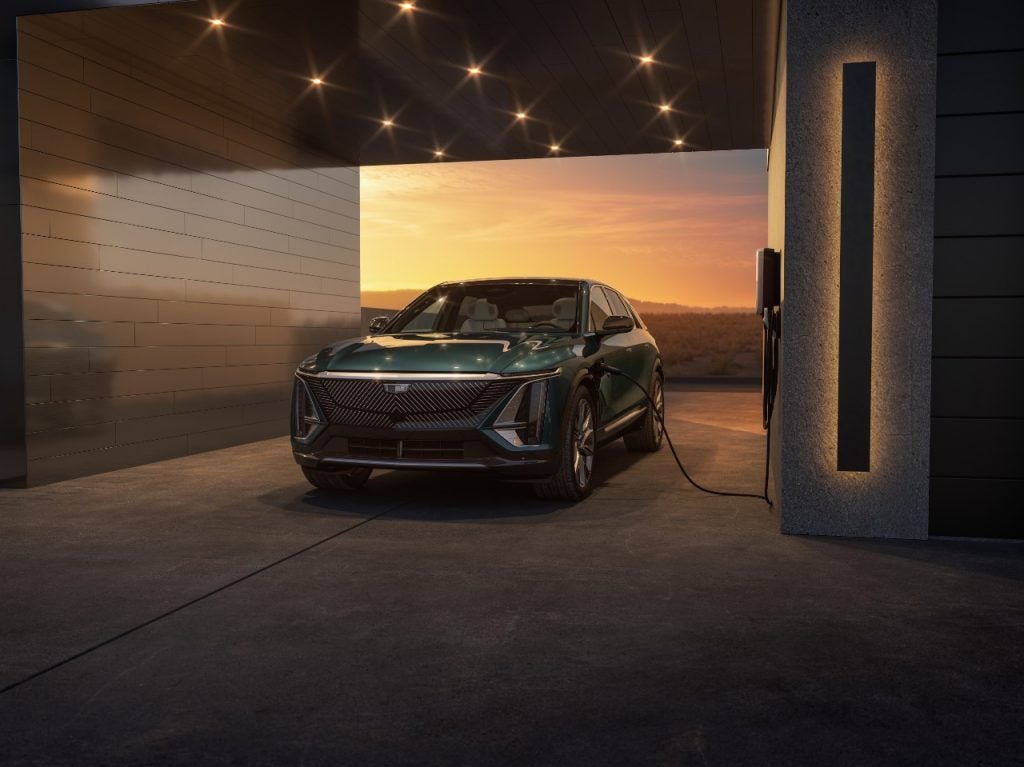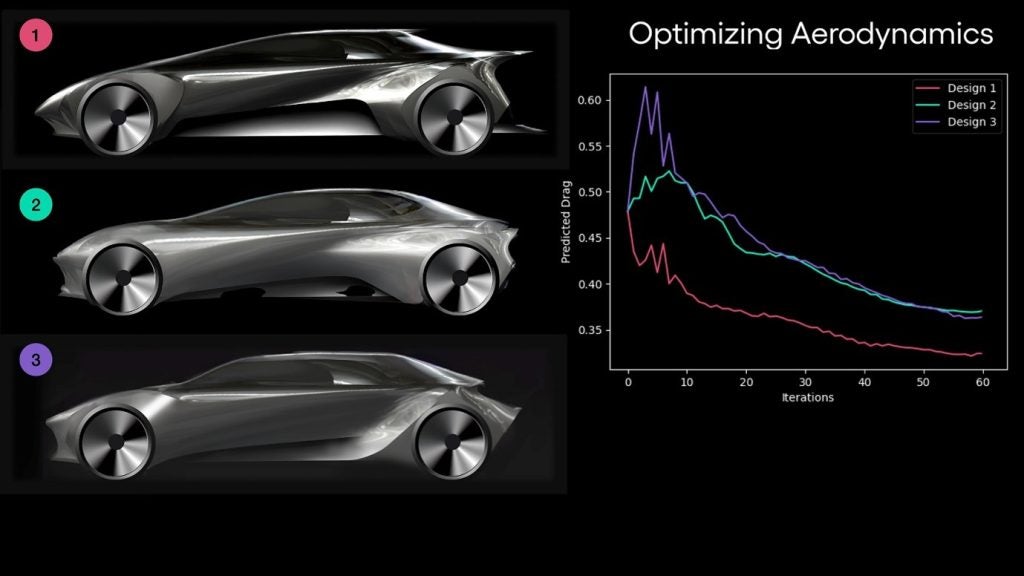
Inside story
The desire for a spacious interior, something always equated with luxury, is prompting interior designers to use new combinations of electronics and mechanical functions to modify or move pre-existing systems like heating/cooling and audio facilities. In terms of controls, touchscreens offer space-saving possibilities, but designers are faced with the problem of distracting the driver’s attention. The latest generation of Golf GTI appears to have struck the right balance.
The central ten-inch touchscreen with a web connection is paired with a second driver display located on the other side of the steering wheel and joined by a reconfigurable instrumentation cluster. While it is not a seamless panel, it does a good job of presenting driver-critical information and infotainment.
Compared with the previous generation, many of the interior buttons and switchgear have been removed and replaced with sliders and touch panels for all of the main functions. Some of these functions can also be controlled via voice recognition and/or steering wheel controls.
Beneath the central touchscreen is a strip of touch-sensitive pads to control the radio volume and cabin temperature. And lower down positioned slimmer, slick air vents that further accentuate the minimalist cockpit.
The GTI interior is distinguished by red decorative stitching on the seats, centre armrest, floor mats and multifunction steering wheel. The sports steering wheel is finished in perforated leather at 9 and 3 o’clock. The steering wheel clip at 6 o’clock is customised by GTI lettering and red accents. Paddles on the steering wheel facilitate manual interventions in the otherwise automatic gear changes of the 7-speed dual-clutch gearbox (DSG).
Continuing the boy-racer theme, the multifunction sports steering wheel has also been designed with a red appliqué and the GTI badge. Another typical Golf GTI feature is the honeycomb pattern on the dash panel and door trim. The new engine start/stop button comes as standard in the Golf GTI. Once the doors have been opened, it pulses red until the engine has been started.
The standard ArtVelours covers of the manually-adjusted sport seats (with integrated head restraints) have also been newly designed. The door inserts are finished with ArtVelours trim covers.
Other noteworthy interior highlights include mood lighting that can be set to one of 30 colours. The selected colour illuminates the decorative trim across the dash, door trim and cubby spaces, front footwells and central storage compartment. The digital instruments and infotainment system also take on the selected background colour. Along with the individual colours, pre-configured lighting profiles can be selected by simply touching a ‘mood menu’: for example, ‘Infinity’ for a warm orange or ‘Desire’ for a cool blue shade.
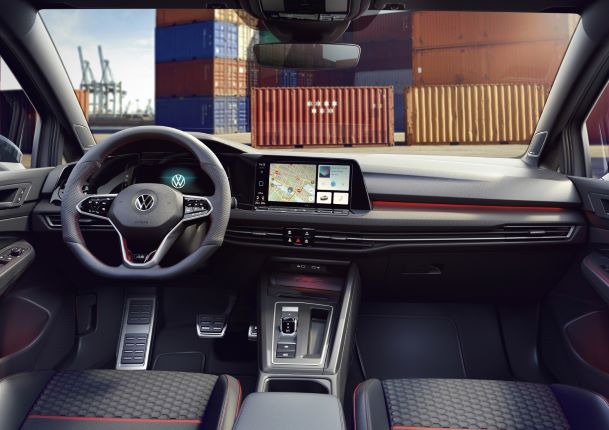
Connectivity
On the connectivity front, car-to-car wireless communication features on the GTI. Car2X enables the car to exchange information between other vehicles and the traffic infrastructure. It uses an EU-standard network valid for all automakers so that vehicles from different brands can exchange data about hazards on the road ahead, such as broken-down vehicles, traffic jams or approaching emergency services. There are strict EU rules in place concerning this data, allowing it to be sent anonymously and not captured or stored by anyone.
All GTI models are equipped as standard with an infotainment system providing access to mobile online services. Using Volkswagen’s We Connect system as an interface, compatible Samsung smartphones are capable of functioning as the Golf’s ‘key’ via the We Connect app. Via their mobile phone, owners can unlock, lock and start the car. No mobile network connection is required to use the smartphone as a mobile key. Owners just need to place their smartphone near the door handle, in the same way as the keyless locking and starting system Keyless Access opens the vehicle. Once inside, putting the smartphone in the centre console (in the storage compartment with an interface for mobile phone) allows the car to be started.
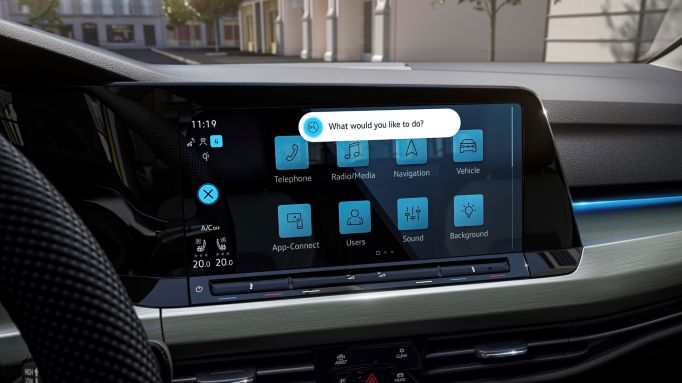
Voice control
Voice recognition is seen by some as the answer to eliminating many controls that have traditionally been manually operated. Voice can play an important part in a multimodal human-machine interface (HMI) solution for inputting information or for cutting through layers on the menus by requesting a function directly.
Traditional voice control was centred on a set of fixed commands with catatonic responses which required some level of driver training before using the system. With the advent of the new low-power, high-performance microprocessors, smarter voice command engines linked to the HMI logic are now available. Even natural language and grammatical analysis are becoming more achievable.
The voice control function in the GTI demonstrates its usefulness to activate certain functions. It is activated by saying “Hello Volkswagen” or pressing a button on the steering wheel. It responds with “Yes, please?” or “What would you like to do?” and reacts to voice commands, such as “Go to [destination]” or “I’m cold”. It also does a pretty good job of locating the person who is speaking, either the driver or the front passenger. For example, the passenger could ask for their heated seat to be switched on and the system would recognise this and only activate the passenger’s heated seat.
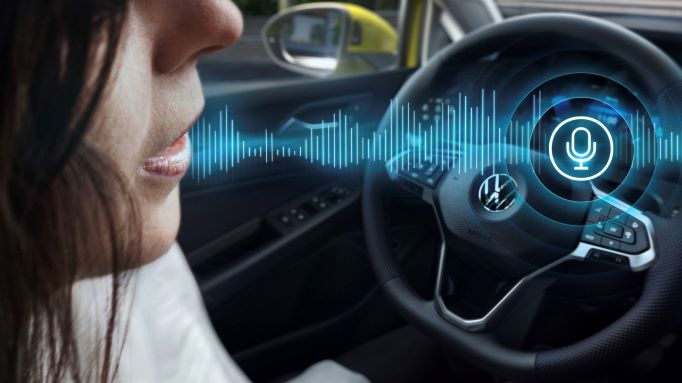
Gesture control
If you like the idea of talking to your car to operate various functions, the Golf allows you to wave and take a swipe at it. This means menus on the infotainment system can be accessed with the swipe of the driver or passenger’s hand. A swipe gesture moves the horizontally arranged menu items to the left or right. This enables the driver to scroll through the main menu, change radio stations, scroll forward or back through the playlist or browse in the picture viewer and music albums.
Sounds good
Another option is the 480-watt Harman Kardon sound system with a 12-channel Ethernet booster and ten speakers. With one treble speaker in the A-pillars and rear door trim, and a bass speaker in the front and rear door trim panels on each side of the vehicle, the whole set-up offers excellent sound quality. A central speaker, meanwhile, is added to the dash panel at the front, with a large subwoofer fitted into the spare wheel well.
Advanced driver assistance systems
Having debuted in 2019 on the Passat, Travel Assist now features on the Golf enabling Level 2 driving automation that can accelerate, brake and steer for you on motorways.
The feature combines the functions of existing systems such as adaptive cruise control (ACC, see below) and the lane assist lane-keeping system. The system now recognises kerbs and grass verges in addition to painted lines on the road. It is activated using the multifunction steering wheel while for legal and safety-related reasons drivers must permanently monitor the system – meaning that they must have at least one hand on the steering wheel. Thanks to capacitive sensor technology in the steering wheel, the driver just has to touch the wheel. If the system calculates that they have let go for more than 15 seconds then visual and audible warning signals kick-off plus a braking jolt to act as a warning to regain control. The driver must react by this point and touch the steering wheel, otherwise, Emergency Assist is activated and the car is brought to a stop.
The carmaker’s third and latest generation ACC function is now predictive, automatically adjusting speed for permanent and temporary speed limits, as well as slowing for junctions and corners. It is fed by both GPS and road sign recognition. This means the system calculates the position of the Golf based on route and GPS data from the navigation system to lower its speed before reaching bends, roundabouts, junctions, speed limits and built-up areas. At the same time, ACC accesses the Dynamic Road Sign Display via the front camera and adjusts the speed as soon as a limit has been detected.
It is undeniably fun to drive yet comfortable and practical to live with on a day-to-day basis. Above all, it has the interior feel and quality that we have come to expect from VW. Rival models in the hot hatch camp include the Honda Civic Type R and Ford Focus ST.



